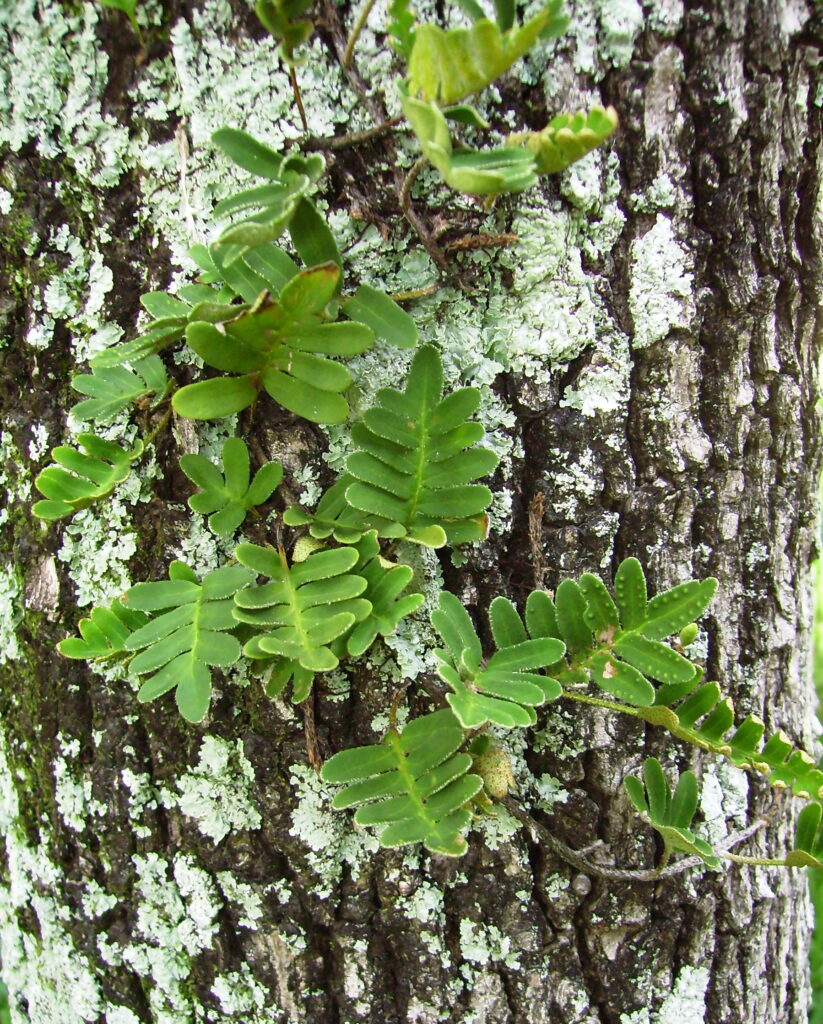The abundant summer rain that often occurs in subtropical and tropical regions has triggered the lush growth of a favored plant, the resurrection fern. This southeastern U.S., Central America, and Caribbean native plant ranges from Delaware south to Florida and west to Texas, Mexico, and Guatemala. There is no doubt resurrection fern thrives when it rains.

Resurrection fern, known as Pleopeltis polypodioides var. michauxiana to scientists and horticulturists, received the common name due to its habit of drying and turning brown when the weather is dry and renewed green growth when it rains. It is a creeping epiphyte and a true fern. Epiphytes are defined as plants growing on other plants but not deriving nourishment from the host plant. Ferns are plants without flowers; they primarily reproduce via spores. Resurrection fern is commonly found on large trees such as oaks, cypress, and occasionally shrubs growing in humid areas.
The growth mode of the resurrection fern is a thin hairy, scaly rhizome (lateral stem) that creeps along the tree branch or other support. The fern leaves are spaced out at conspicuous nodes in a linear pattern. Individual leaves are 2 to 7 inches long, 1 to 2 inches wide, oblong, deeply divided, gray-green, and scaly on the undersides. Resurrection fern reproduces by spores formed in round sori (clusters of reproductive structures) on the back of leaves.
Also known as Gray’s Polypody, this is one of the most widespread ferns in the southern U.S. It is found in urban settings, forests, and wetlands. Well adapted to and not just surviving but thriving in the wet and dry seasons common to Florida, growth is rampant when water is plentiful, and when it is dry, the fern dries, curls, turns brown waits for rain. Resurrection fern thrives when it rains.
Creeping resurrection fern prefers shade and is a plant with many well-branched stems which grow in patches, sometimes only a few inches long and wide to large mats covering whole oak branches. Nourishment for the fern comes from decayed fallen leaves and other organic material from the branches and leaves above. No additional fertilizer is needed when anchored on actively growing trees.
Purchase resurrection fern from qualified local nurseries, though few will carry the specialty plant. This fern can be propagated by the division of living patches. The plant population is not threatened or endangered. However, starting the fern from pieces from fallen branches is best. Resurrection Fern is not an endangered species, but it is best not to collect it from the wild unless it has been dislodged from the host tree or rock. No pests are known to infest resurrection ferns.
Leave a Reply